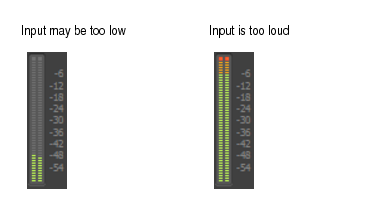Tutorial 3 – Recording vocals and musical instrumentsOne of the most important aspects of creating music in SONAR is digital audio recording. This is the process of taking the sound from a microphone or an instrument and recording it to an audio track. Once this step is completed, you can edit and mix the song to prepare it to share with the world.This tutorial will walk you through the steps involved and provide you with some insight on how to get the best possible audio recordings.In Tutorial 1, you learned about opening project templates. Let's open a blank project for this tutorial:On the File menu, click New.


.
if you want to hear the input during recording. Many sound cards and audio interfaces have an option to do this automatically at the hardware level. If you can already hear the input signal, simply move on to the next section.Getting ready to record
Perform as you would if you were recording and watch the meter on the track respond to the sounds you produce.If the meter never even comes close to the maximum, increase the input level. If the meter even occasionally reaches the maximum, decrease the input level.Input levels are usually adjusted via a knob next to the input jack on the sound card, but features like this may vary slightly between devices. So, if you have never recorded an instrument or microphone with your sound card, you may want to read about doing so in the device's manual.The record meter shows the input levelNow that everything is set up, let's record something!Go to Edit > Preferences > Project - Metronome to access metronome settings. You can also right-click the Playback Metronome on/off buttonor Record Metronome on/off button
in the Control Bar’s Transport module to access metronome settings.

.Click the Record button in the Control Bar’s Transport module, or press R on your computer keyboard.You'll hear two measures counted in by the metronome and then recording will begin. Start performing at the beginning of the third count.
Tip - Searching Documentation
Tip: To search for a specific topic, type your search query in the Search Cakewalk.com field at the top right of this page.
When the search results appear, click which product's documentation you would like to search to filter the search results further.
Note - Using Offline Help
Note: If you prefer to always use offline Help, go to Edit > Preferences > File > Advanced in your Cakewalk software and select Always Use Offline Help.
If you are not connected to the internet, your Cakewalk software will default to showing offline help until an internet connection becomes available.




